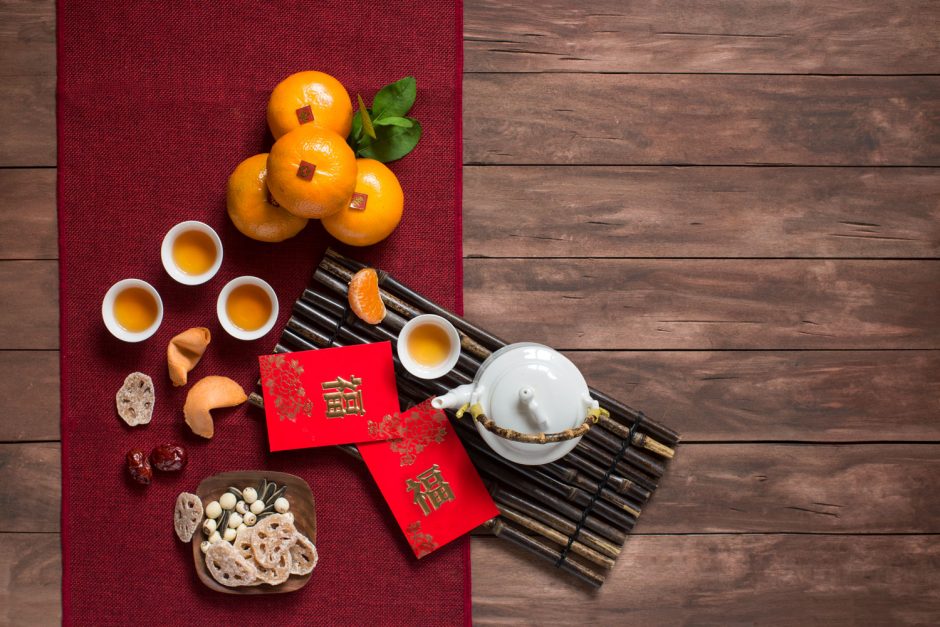There’s plenty of exciting traditions involved in celebrating the lunar new year, but it’s far from complicated. If you have friends who celebrate the lunar new year and would love to share it with them but don’t know how don’t stress! We’re here for you! Here are a few tips to understanding the ceremony and tradition behind this ancient celebration.
What each family considers a traditional New Year dish often depends on where they come from and their personal preferences. Most meals served in Australia will generally follow similar themes, however.
Fish symbolises bounty and fortune for the forthcoming year and is eaten for good luck. It’s even better luck to eat it last and leave some on the plate, representing plentiful food for the coming year.
Dumplings are made to look like silver nuggets and represent – unsurprisingly – money. It’s said the more you eat of the little dough packages the richer you’ll be through the next year.
Tang yuan, or yuan xiao, are sweet, small balls made from glutinous rice flour that is cooked and served in soup. Their roundness represents the more wholesome idea of family unity and the joy of coming together to celebrate.
In China the traditional “reunion meal” – where family travel home from wherever they may be – is the centrepiece of new year celebrations. Much like Christmas lunch or dinner reunites families from across Australia, families across China and large swathes of Asia travel miles to come together to eat and be merry. Food is very much the centrepiece of the lunar new year and the reunion meal is the jewel in the crown.
Just like the Gregorian calendars new year’s celebrations, most families stay up past midnight to bring in the New Year by either watching or launching fireworks, known as shou sui. The fireworks are meant to drive away evil spirits. Legend tells of an old man who used loud noises and red objects to scare off a beast called Nian. The legend helps to explain why fireworks and the colour red are so synonymous with the lunar new year.
In Australia, houses, businesses, cars and even dogs are covered in red, and Chinatowns across the country become the ruby heart of lunar new celebrations.
One of the main forms of entertainment is the incredibly athletic and energetic dragon and lion dances. The lion or dragon usually contains at least eight people, though some giant versions may have up to 50! Accompanied by beating drums and clashing cymbals, these dances signify joy, happiness and good luck, and something you’ll see as part of lunar celebrations across Australia.
One of the more famous traditions associated with the lunar new year – probably because it involves money – are the little red packets. Known as hong bao in Mandarin and lai see in Cantonese, they are given by adults to young children as a symbol of good luck. Anytime you get given free money sounds lucky to me!
removing the previous year’s bad luck.
If you’ve ever wondered why your friends seem to throw out a lot of stuff around the new year, it’s because spring cleaning was traditionally done around the new years festival. The theory is you clean out all the bad luck and make space for all your good fortune!
Ideally, families should avoid cleaning for at least the first two days of the New Year to avoid sweeping away the good luck collected by the litter of firecrackers, red paper and celebration wrappers. So, kids, you have an excuse to leave your clothes on the floor.
Lanterns are ubiquitous at Chinese New Year events. The final celebration for most families is the lantern ceremony held 15 days after new year’s eve. In some countries floating lanterns are lit and cover the sky like little flickering stars, while other places will float lanterns on lakes and rivers. In Australia, lanterns and paper cutouts are hung outside houses and businesses to welcome in good fortune.
To represent a fresh start, the Chinese believe everything should be renewed. That means shopping is a big deal for anyone keen to get into the Chinese New Year spirit – a concept heartily embraced by retailers and department stores.
I mean, what’s the point in cleaning out your closet unless you can restock it again! Just make sure you buy plenty of red.






You must be logged in to post a comment.